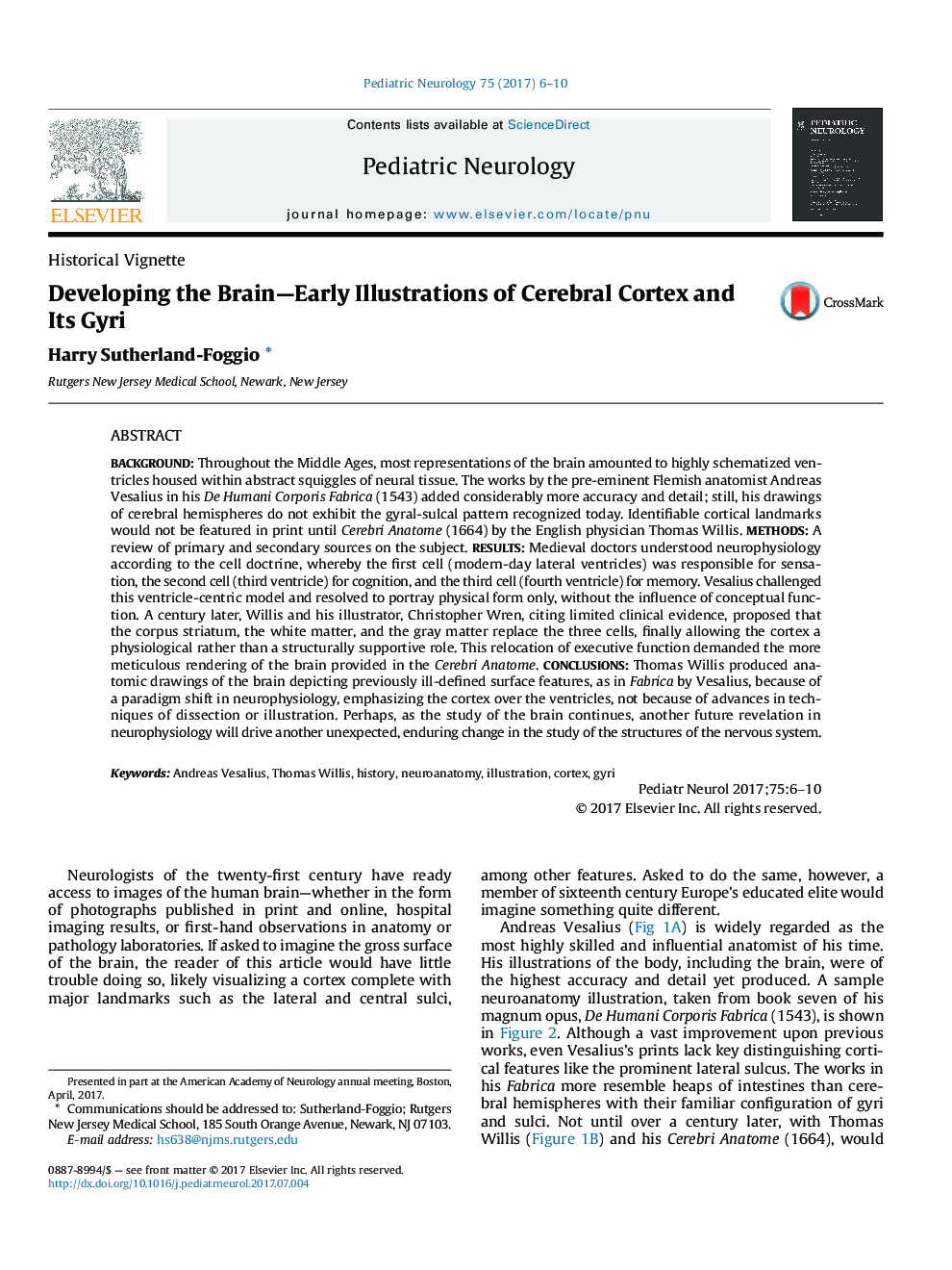| کد مقاله | کد نشریه | سال انتشار | مقاله انگلیسی | نسخه تمام متن |
|---|---|---|---|---|
| 5632798 | 1581251 | 2017 | 5 صفحه PDF | دانلود رایگان |
BackgroundThroughout the Middle Ages, most representations of the brain amounted to highly schematized ventricles housed within abstract squiggles of neural tissue. The works by the pre-eminent Flemish anatomist Andreas Vesalius in his De Humani Corporis Fabrica (1543) added considerably more accuracy and detail; still, his drawings of cerebral hemispheres do not exhibit the gyral-sulcal pattern recognized today. Identifiable cortical landmarks would not be featured in print until Cerebri Anatome (1664) by the English physician Thomas Willis.MethodsA review of primary and secondary sources on the subject.ResultsMedieval doctors understood neurophysiology according to the cell doctrine, whereby the first cell (modern-day lateral ventricles) was responsible for sensation, the second cell (third ventricle) for cognition, and the third cell (fourth ventricle) for memory. Vesalius challenged this ventricle-centric model and resolved to portray physical form only, without the influence of conceptual function. A century later, Willis and his illustrator, Christopher Wren, citing limited clinical evidence, proposed that the corpus striatum, the white matter, and the gray matter replace the three cells, finally allowing the cortex a physiological rather than a structurally supportive role. This relocation of executive function demanded the more meticulous rendering of the brain provided in the Cerebri Anatome.ConclusionsThomas Willis produced anatomic drawings of the brain depicting previously ill-defined surface features, as in Fabrica by Vesalius, because of a paradigm shift in neurophysiology, emphasizing the cortex over the ventricles, not because of advances in techniques of dissection or illustration. Perhaps, as the study of the brain continues, another future revelation in neurophysiology will drive another unexpected, enduring change in the study of the structures of the nervous system.
Journal: Pediatric Neurology - Volume 75, October 2017, Pages 6-10
